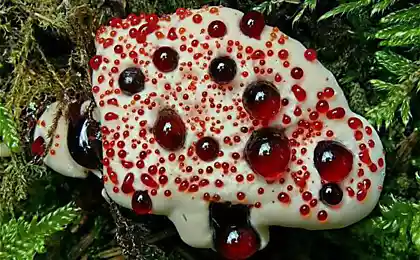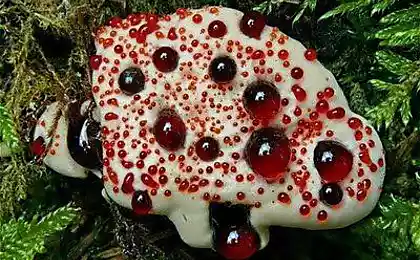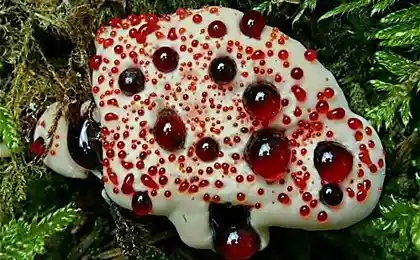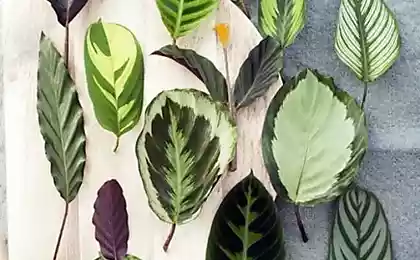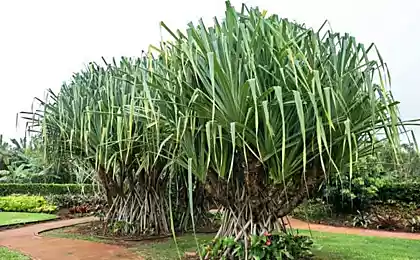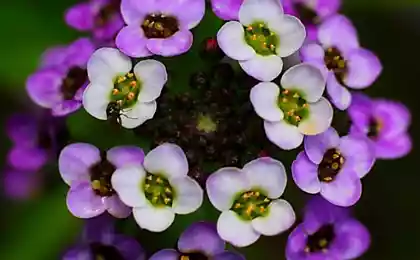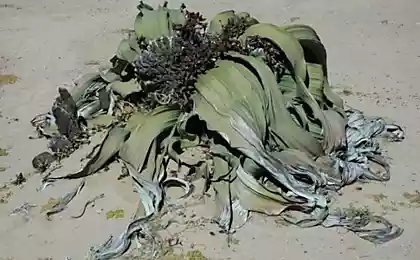516
Corpse flower
Plant species Rafflesia (Rafflesia cantleyi), better known as the corpse flower for its pungent odor, takes away from his master just everything. Although each flower can reach about 90 cm in diameter, huge Bud can not feed themselves.
Fourteen million five hundred eighty three thousand seven hundred sixty six
It has no leaves, stems, and true roots. With little or nothing, it depends entirely on the donor vine called Tetrastigma (Tetrastigma rafflesiae). Food and drink is not the only thing that steals the corpse flower. Over time this flower took the genes of his flower-donor. Have a corpse flower and the donor can say intimate relationship.
Fifty million four hundred six thousand seven hundred twenty two
From the beginning, the Rafflesia is embedded in the tissue of the Tetrastigma plant, and grows in the form of filiform formations in direct contact with the surrounding cells of the vines. He is so dependent on their host that the corpse flower has lost the ability to produce chlorophyll, necessary for photosynthesis, and thereby violates the very nature of the plant being unable to produce food from sunlight. These plants are parasites feed on their host until they grow up into huge flowers that smell like rotting flesh. Somehow, through generations of close contact between parasite and host, Rafflesia has turned into something more than just a parasitic remains. He has appeared dozens of genes of the donor. This mechanism is called horizontal gene transfer, and it is widespread in bacteria, which convey resistance to antibiotics, but much less frequently among plants and animals. Scientists still don't know exactly how it happens.
Twenty million five hundred forty five thousand four hundred eighty three
Researchers from Harvard University followed by all active genes of corpse flower and its host, and found that of the 49 proteins expressed in Rafflesii, 2 percent are the rewritten genome, something like "pirated copy". Stolen genes perform a variety of cellular functions, including breathing, metabolism and other. Gene transfer can improve the ability of plant parasites take nutrients from the host, or help to penetrate the protective system of the host, as occurs in bacterial pathogens of citrus trees.
Source: /users/117
Fourteen million five hundred eighty three thousand seven hundred sixty six
It has no leaves, stems, and true roots. With little or nothing, it depends entirely on the donor vine called Tetrastigma (Tetrastigma rafflesiae). Food and drink is not the only thing that steals the corpse flower. Over time this flower took the genes of his flower-donor. Have a corpse flower and the donor can say intimate relationship.
Fifty million four hundred six thousand seven hundred twenty two
From the beginning, the Rafflesia is embedded in the tissue of the Tetrastigma plant, and grows in the form of filiform formations in direct contact with the surrounding cells of the vines. He is so dependent on their host that the corpse flower has lost the ability to produce chlorophyll, necessary for photosynthesis, and thereby violates the very nature of the plant being unable to produce food from sunlight. These plants are parasites feed on their host until they grow up into huge flowers that smell like rotting flesh. Somehow, through generations of close contact between parasite and host, Rafflesia has turned into something more than just a parasitic remains. He has appeared dozens of genes of the donor. This mechanism is called horizontal gene transfer, and it is widespread in bacteria, which convey resistance to antibiotics, but much less frequently among plants and animals. Scientists still don't know exactly how it happens.
Twenty million five hundred forty five thousand four hundred eighty three
Researchers from Harvard University followed by all active genes of corpse flower and its host, and found that of the 49 proteins expressed in Rafflesii, 2 percent are the rewritten genome, something like "pirated copy". Stolen genes perform a variety of cellular functions, including breathing, metabolism and other. Gene transfer can improve the ability of plant parasites take nutrients from the host, or help to penetrate the protective system of the host, as occurs in bacterial pathogens of citrus trees.
Source: /users/117




